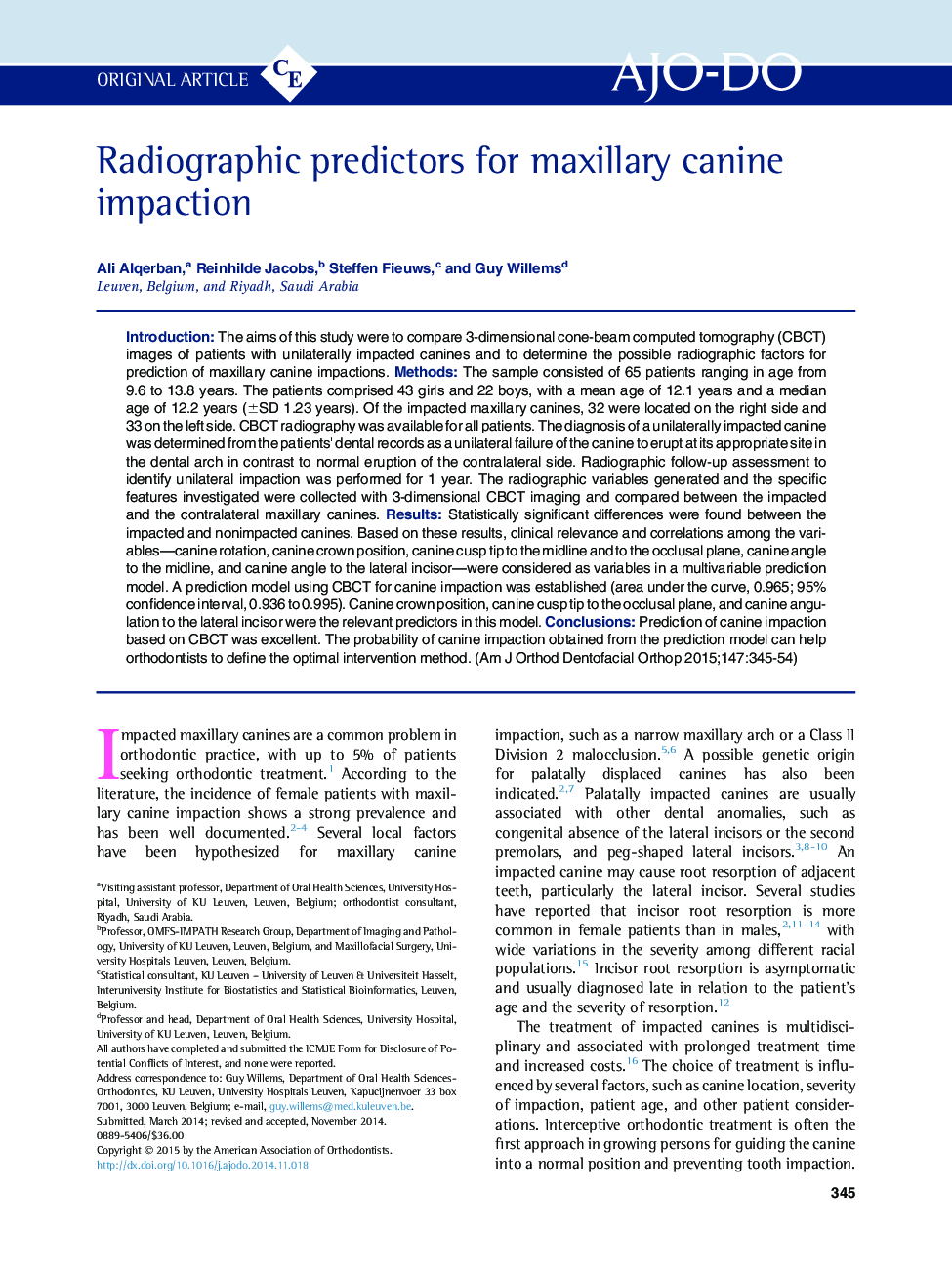| کد مقاله | کد نشریه | سال انتشار | مقاله انگلیسی | نسخه تمام متن |
|---|---|---|---|---|
| 3115832 | 1582692 | 2015 | 10 صفحه PDF | دانلود رایگان |
• Prediction of the probability of canine impaction based on CBCT was excellent.
• Angulation to lateral incisor, cusp tip to occlusal plane, and crown position were the predictors.
• The prediction model can help orthodontists to define the optimal intervention method.
IntroductionThe aims of this study were to compare 3-dimensional cone-beam computed tomography (CBCT) images of patients with unilaterally impacted canines and to determine the possible radiographic factors for prediction of maxillary canine impactions.MethodsThe sample consisted of 65 patients ranging in age from 9.6 to 13.8 years. The patients comprised 43 girls and 22 boys, with a mean age of 12.1 years and a median age of 12.2 years (±SD 1.23 years). Of the impacted maxillary canines, 32 were located on the right side and 33 on the left side. CBCT radiography was available for all patients. The diagnosis of a unilaterally impacted canine was determined from the patients' dental records as a unilateral failure of the canine to erupt at its appropriate site in the dental arch in contrast to normal eruption of the contralateral side. Radiographic follow-up assessment to identify unilateral impaction was performed for 1 year. The radiographic variables generated and the specific features investigated were collected with 3-dimensional CBCT imaging and compared between the impacted and the contralateral maxillary canines.ResultsStatistically significant differences were found between the impacted and nonimpacted canines. Based on these results, clinical relevance and correlations among the variables—canine rotation, canine crown position, canine cusp tip to the midline and to the occlusal plane, canine angle to the midline, and canine angle to the lateral incisor—were considered as variables in a multivariable prediction model. A prediction model using CBCT for canine impaction was established (area under the curve, 0.965; 95% confidence interval, 0.936 to 0.995). Canine crown position, canine cusp tip to the occlusal plane, and canine angulation to the lateral incisor were the relevant predictors in this model.ConclusionsPrediction of canine impaction based on CBCT was excellent. The probability of canine impaction obtained from the prediction model can help orthodontists to define the optimal intervention method.
Journal: American Journal of Orthodontics and Dentofacial Orthopedics - Volume 147, Issue 3, March 2015, Pages 345–354
